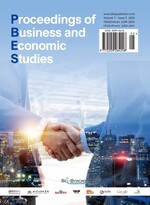Abstract
In this article, lane change models for mixed traffic flow under cooperative adaptive cruise control (CACC) platoon formation are established. The analysis begins by examining the impact of lane changes on traffic flow stability. The influences of various factors such as lane change locations, timing, and the current traffic state on stability are discussed. In this analysis, it is assumed that the lane change location and the entry position in the adjacent lane have already been selected, without considering the specific intention behind the lane change. The speeds of the involved vehicles are adjusted based on an existing lane change model, and various conditions are analyzed for traffic flow disturbances, including duration, shock amplitude, and driving delays. Numerical calculations are provided to illustrate these effects. Additionally, traffic flow stability is factored into the lane change decision-making process. By incorporating disturbances to the fleet into the lane change income model, both a lane change intention model and a lane change execution model are constructed. These models are then compared with a model that does not account for stability, leading to the corresponding conclusions.
References
Wang J, Zheng Y, Xu Q, et al., 2020, Controllability Analysis and Optimal Control of Mixed Traffic Flow with Human-driven and Autonomous Vehicles. IEEE Transactions on Intelligent Transportation Systems, 22(12): 7445–7459. https://doi.org/10.1109/TITS.2020.3002965
Quoc HD, Mita S, Tehrani H, et al., 2017, Human Drivers Based Active-Passive Model for Automated Lane Change. IEEE Intelligent Transportation Systems Magazine, 9(1): 42–56. https://doi.org/10.1109/MITS.2016.2613913
Hidas P, 2002, Modelling Lane Changing and Merging in Microscopic Traffic Simulation. Transportation Research Part C: Emerging Technologies, 10(5–6): 351–371. https://doi.org/10.1016/S0968-090X(02)00026-8
Habel L, Schreckenberg M, 2016, Analysis of Asymmetric Lane Changing in a CA-Based Highway Traffic Model. Journal of Cellular Automata, 11(4): 351–361.
Ahmed KL, Ben-Akiva M, Koutsopoulos H, et al., 1996, Models of Free-Way Lane Changing and Gap Acceptance Behavior. Proceedings of the 13th International Symposium on Transportation and Traffic Theory, 1996(13): 501–515.
Liu M, Shi J, 2019, A Cellular Automata Traffic Flow Model Combined with a BP Neural Network Based Microscopic Lane Changing Decision Model. Journal of Intelligent Transportation Systems, 23(4): 309–318. https://doi.org/10.1080/15472450.2018.1462176
